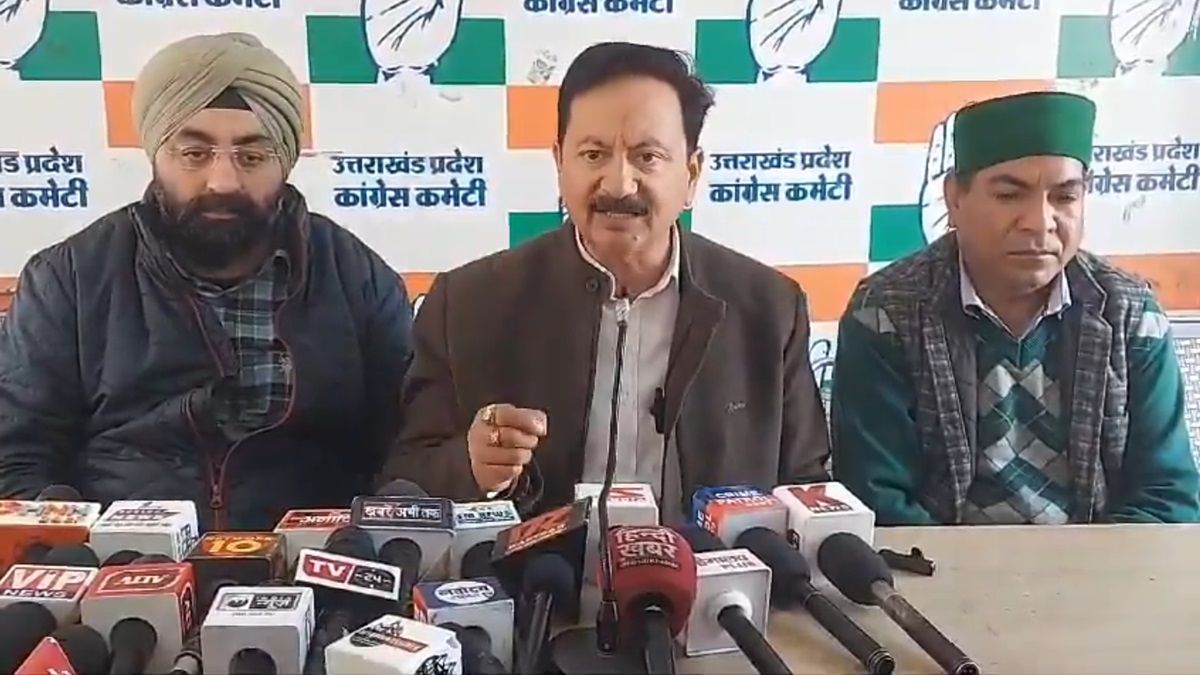The city of San Francisco approved in August that autonomous taxis could circulate throughout the city. Since then, disasters have followed: cars on the sidewalk, arrests in the middle of the road and even an accident. The culmination was the departure of one of the companies, Cruise, from the city and the resignation in late November of its CEO, Kyle Vogt. Just yesterday, Tesla had to recall more than two million cars due to failures in its autonomous system.
Meanwhile, in Toronto (Canada), a startup Created in 2021 by the Spanish engineer Raquel Urtasun (Pamplona, 1976), she looks at this panorama with the calm of having a different technological solution for driverless cars. Urtasun, who appears on lists of the most influential personalities in the field of artificial intelligence, is not the only one to believe that she has an alternative. Her company, Waabi, received $83 million in its first round of funding, the largest in Canadian history. Waabi focuses on autonomous trucks: trailers with its software are already circulating in tests on the roads of Texas (USA). “We have gone very fast,” says Urtasun.
???? @Cruise self-driving operations had a complete meltdown earlier in North Beach. We overheard on the scanner that all Cruise vehicle agents were tied up at the time (not literally) and so North Beach was going to get a delayed response. But wow, WTF!pic.twitter.com/D89xrSxAdu
— FriscoLive415 (@friscolive415) August 12, 2023
Urtasun has been in Canada for 25 years. This interview conducted via videoconference from Toronto is done in English: “I don’t remember how you say these things in Spanish.” Urtasun remains a professor at the University of Toronto, where she directed “the laboratory considered the best in the world in autonomous driving” and before Waabi she was in charge of autonomous driving at Uber, which has closed that division. Urtasun believes that the second generation she leads will solve the problems that first generation companies have brought to the streets of San Francisco.
“One of the reasons why I have been dedicated to autonomous driving for 15 years is because I know many people who have had severe traffic accidents. That motivates me. It’s an obsession, it’s not just another problem. Two million people die every year, imagine the impact you can have. It is very close to my heart and that is why I dedicate my entire career to solving this problem,” she says.
Ask. Why are there no autonomous vehicles yet?
Answer. The industry today has consolidated in the so-called version 1.0, which is an engineering approach that requires driving many miles to see what new extraordinary situations the vehicle will encounter. Once you have observed them, you have to adjust the system by hand to resolve them and continue testing. In the end you are at the mercy of nature to know which situations you can take on and which you cannot. It is a very slow process. Each new situation is more difficult to decipher. The industry has actually stopped in terms of progress. We are not even at level 4 [el nivel 5 sería la conducción total sin humanos, el 4 implica una conducción autónoma en entorno muy delimitado]. There is no autonomous truck out there yet that is not a demo.
Q. But there are already cars on the streets.
R. Yes, robotaxis, but it is a small deployment and requires a lot of remote human intervention. It’s exciting that there is deployment, but we are still far from having robotaxis everywhere. It’s the same with trucks, there is not a single deployment without humans. The industry has consolidated, but we need a big technological change to take it forward at scale.
Q. Which?
R. I called it “AI.” [inteligencia artificial] first” for lack of a better name. Thanks to OpenAI, today we can call the technology that we have been developing for two and a half years “generative AI.” Now everyone understands me when I say “AI first.” You can go much faster towards the goal of marketing at scale. That is the key that will enable a future of autonomous vehicles.
Q. Is that what Waabi does?
R. Yes, that’s why I founded a company. There is no better way to build new technology than creating a company from scratch.
Q. And what do the cars that already circulate do?
R. It’s very different. The Waymos, Cruises, Auroras, Zoox, have an engineering approach where you have bits of AI, but they don’t deploy all their power. We build a single AI system that is both interpretable, you can trace decisions, which is very important from a security point of view. That’s very different from what you see in the more traditional and consolidated approach in the industry.
Our competitors can no longer change. That’s precisely why I founded the company.
Q. When did you see that you should look for another approach?
R. I have been working with AI for 25 years. Before Waabi it was this complex system where you try to add more bits of AI. With Waabi what drives our trucks is a foundational model, a single AI system that can do all the tasks necessary to drive. It’s very different. In 2018 I said that this was the direction I thought we should go. Now we are executing that vision, instead of taking something and taking it step by step towards the goal, which would take a lifetime to get there. That’s why I don’t think this revolution would happen in an existing company. It’s been 25 years, I haven’t seen him overnight.
Q. Now you have no doubts?
R. I do not have doubts. We have the advantage of being second. Our competitors have invested billions of dollars in a generational technology, but from an old generation.
Q. And they can’t change anymore?
R. They can not. You would have to change the entire DNA of your company. What are you going to tell your shareholders? “Wait, give me two years and I will show you this new generation.” That’s precisely why I founded the company. They are not going to change. It was such a great opportunity. We now see that this is the correct approach.
Q. Where is Waabi now?
R. Under development, we have a safety driver who is about to take control if necessary. This is for level 4, which means that when we are ready there will be no driver in the truck.
Q. Along with the foundational model with AI, what else does Waabi contribute?
R. The simulator. We have used generative AI to develop something that is like the real world. That way you don’t need all those real-world miles. You solve the data problem. It has been a huge step.
A machine can, in theory, drive much better. They are equipped with sensors that humans do not have
Q. He has said other times that a machine does not need common sense or advanced intelligence to drive.
R. Humans are extraordinary. We have the ability to generalize and do many tasks with very few examples. That is traditionally very difficult for machines. To achieve better autonomous driving, we don’t have to solve all human capabilities. We don’t have to get to artificial general intelligence.
Q. And how do you drive a machine?
R. A machine can, in theory, do much better. They are equipped with sensors that humans do not have: they see 360 all the time, potentially further away, they perceive better in three dimensions. Humans have a narrow field of vision and in a complex city so many things happen that you cannot keep an eye on everything and that is how most accidents occur: a high percentage is human error, plus distractions.
Q. Why did you choose trucks?
R. At Uber I worked on cars and trucks. One thing was clear that, from a commercial point of view, the transportation industry is ready and mature. The lack of drivers is real. The average age of truck drivers continues to grow. It was 35 years ago 20 years ago and today it is 55. Nobody wants to take these long road trips. It’s a very hard life. Companies need to deploy many more transportation routes.
Q. Was it just a commercial decision or also a technological one?
R. Also technological. This driving is mostly on highways. It’s easier than in cities. There are other reasons: I started the company in the pandemic and we saw how the supply chain affects us all. There is also a climatic reason. Emissions from the trucking industry are large. Today between 20%-30% of truck movements travel empty. We can do much better to optimize it and leave a better future.
Q. That’s the business part. But you’re still a professor, you publish academic articles non-stop. How confident are you in your commitment as a scientist?
R. Everything we do at the company is data-driven and very scientific. I am very, very confident. This is the technology that will solve it.
Why opt for autonomous trucks? The transportation industry is ready and mature
Q. Was it already like this in Uber?
R. This challenge is completely new. This is a total bet on this technology.
Q. And how are you able to see what happens inside the famous AI black box?
R. If you look at a typical large language model you will see a transformer Huge with a billion parameters. That’s a black box. This technology is not that. Our technology is a single system, but as it reasons it creates interpretable intermediate representations. It does it in a way that you can guarantee security. Think of ways to solve interpretation, validation and verification, which for large language models is secondary. For us it was in the design of our original model. It is a very different architecture. This is where part of our secret sauce begins.
Q. Was the arrival of ChatGPT and how it solved the language a surprise?
R. The digital world is much simpler than the physical one. Language is digital, how we communicate, how we write, how we interact. It is clear that it is incredible what these models can do. It has been very exciting to see: the changes in so many industries, in productivity, the new ways of interaction between humans and machines. In that field some mistakes are not so important. But in safety-critical applications, that’s not enough. You need 100% security. The revolution in the physical world has not happened yet, but we are the providers of that technology.
Q. ChatGPT is enough to look smart.
R. You can totally fool people as if you are intelligent in conversation. It’s very fluid. That’s why it may seem like it is general artificial intelligence, but it is not. It is still a primitive AI system compared to general AI. Although they are much better than they were.
Q. In 2019 he said that there were more ways than the human way to achieve intelligence: “The human brain demonstrates the existence of a brain that you cannot replicate artificially and that has extreme intelligence, but it does not mean that it is the only way to achieve it.” How do you see it today?
R. In our founding model, common sense emerges. It’s very interesting. Learn.
Q. What is common sense here?
R. It’s things like traffic rules, how different actors behave. They emerge naturally, automatically. Even with road data, it learns the concepts of objects, how they move, without us coding it by hand, which is the traditional method. It is very intriguing and exciting. You can learn them naturally. That’s a far cry from learning everything a human can do.
Q. As a scientist, do you see it as feasible for her to learn like a human?
R. Getting to general AI? Don’t know. I am a very pragmatic scientist. I am very focused on what the biggest obstacles are in the world today and how we solve them with technology. I’m not focused on whether we can build that machine. I have my feet on the ground.
You can follow EL PAÍS Technology in Facebook and x or sign up here to receive our weekly newsletter.
Subscribe to continue reading
Read without limits
_








